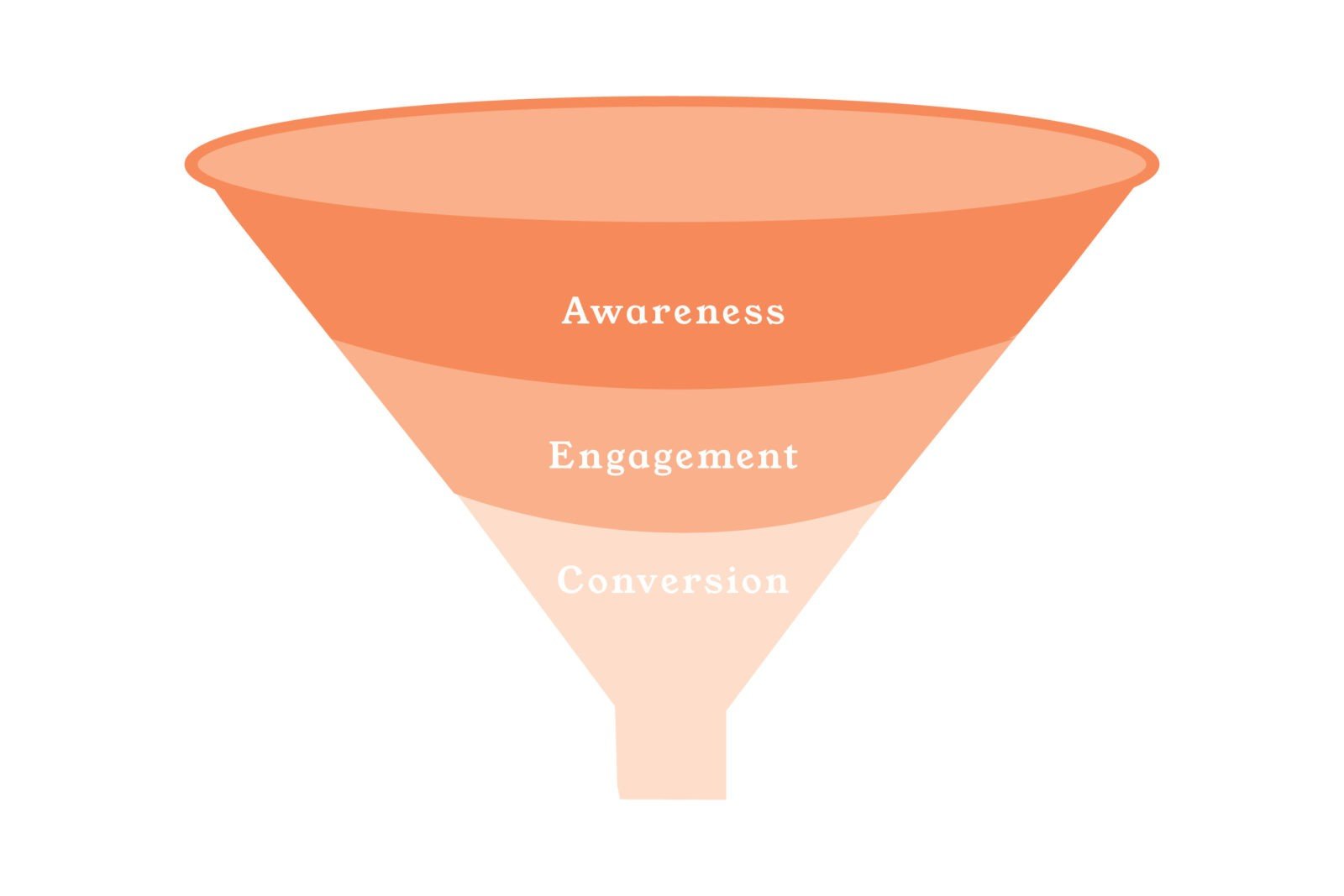The Basics of Digital Advertising KPIs
Key Performance Indicators, or KPIs, are guideposts for your digital advertising campaigns. They are metrics that are used to quantify progress toward important business objectives.
Meeting an advertising KPI is often the signifier of success or failure for an advertising campaign. It’s common practice to set them before the campaign launches and then make strategic optimizations in order to reach the goal that you’ve established.
Simple, right? Not always.
Setting the right KPI for your campaign can be tricky. So, we’ve outlined a quick-reference guide for assigning KPIs to the type of campaign you are running. Let’s look to the tried-and-true marketing funnel to group KPIs by funnel position.
Awareness: Learning Phase
Let’s start at the broadest point of the funnel. At this stage, the goal is to build awareness of your brand, service, or product among your target audience. The aim is to reach as many relevant people as possible, inform and stay top-of-mind among your audience.
Awareness-focused channels are:
In-stream video
Paid social
Advanced TV
Audio.
The primary KPIs you should consider for an awareness campaign for these channels are:
CPM
The goal is to serve impressions to your intended audience at the right frequency with your allocated budget. While you assess your CPM, keep inventory quality top of mind.
CPM is how you measure the number of people who see your ad. For example, a $2 CPM means that it costs $2 to put your ad in front of 1,000 people.
Viewability
Optimize toward viewability standards so that the ads appear in spaces that are in-view to your target audience.
Measuring viewability is a way to determine the general quality of your ad placements. If you have 100% viewability for desktop display, you are most certainly serving ads on fraudulent websites (or you are being very annoying). Fraud, such as ad stacking, makes an ad “viewable” without the user ever seeing it. When you optimize for 100% viewability, you encourage these types of ad placements.
Engagement: Consideration Phase
Let’s move on to the midpoint of the funnel. During the engagement phase, the aim is to influence consideration for your brand, product, or service over your competitors.
You want your target audience to … ENGAGE … with your ads and associated landing pages, learning more about what you have to offer over your competitors.
Engagement-focused channels are:
Display
Paid social
Native
The primary KPI you should consider for an engagement campaign is:
Cost per Click (CPC)
At its core, CPC provides insight into the effectiveness of ads. By optimizing to a low CPC, you’re lowering the amount of money you pay to get someone to click your ad. A low CPC indicates an ad effectively gets your target audience to click.
Clicks measure when a user clicks your ad. That’s it. Sessions measure sets of time spent on your page. Clicks often lead to sessions, but there is much more nuance.
Conversion: Action Phase
At the bottom of the funnel, you have honed in on the portion of your target audience who are most likely to take action.
Success at this stage relies heavily on moving your audience through the two upper phases. However, if you’ve adequately raised awareness and garnered engagement, your audience will likely take that final step. Optimizations at this phase should be focused on driving that action.
Conversion channels are:
Display
Paid social
Paid search
The primary KPI you should consider for a conversion campaign is:
Cost per Action (CPA)
Optimize the cost of advertising based on your target audience taking the desired action.
A low CPA means you’re paying little for a lot of conversions. This, in turn, means your CPM is probably pretty high because you’re only targeting people likely to convert.
If you achieve a low CPA, you know you’ve nailed your targeting, messaging, and strategy for driving conversions.

